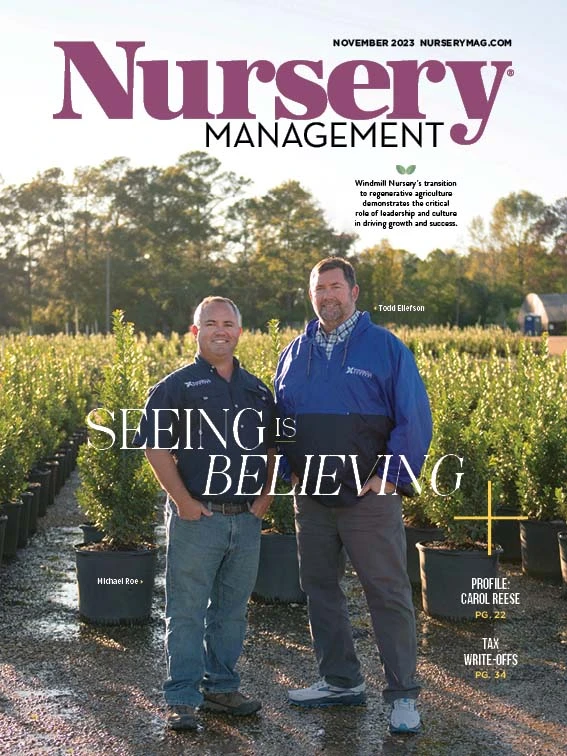
How can growers determine what type of substrate mix they should use?
There are lots of factors to consider when it’s time to select the best available mix. The more information the grower can share with us, the better the fit will be.
Firstly, it depends on the crop, the container or tray used and its size. Those are some of the first questions we ask. But also, the location and the season of the year are important details. Even the irrigation system that will be used can affect the type of mix that should be used.
Lambert has a very useful and user-friendly tool on its website that can help growers select the mix that would be right for them. You can pick the category you want, for example, the professional mix, then you have options like the type of crop and other characteristics. It’s a really practical tool to help find out which mix is right for you. You begin with let’s say 12 options, but once you select a couple characteristics, you end up with two or three options. It helps narrow down the list of options to make sure that it is suitable for you.
Why should growers consider using a mix with sphagnum peat moss? What are the advantages?
It’s mainly because of the value and quality it adds to peat moss mixes. It’s still the best option on the market. One of the main qualities is water holding capacity. Depending on the grade, the peat moss can retain more than 10 times its weight in moisture. Then it releases slowly as the plant needs it.
Also, the screening system allows you to achieve the physical characteristics that are right for the crop and the growing stage of that crop. This will give you the perfect ratio of water retention and air space.
Another important quality of the sphagnum peat moss is its high cation exchange capacity, commonly called C.E.C. Because of the numerous exchange sites of peat moss fibers, it retains lots of positively charged cations, so it reduces leaching of nutrients. You then save money on fertilizer. That characteristic makes the E.C. easier to manage compared to other materials. Also a good point for the peat moss mixes is that they are virtually free of plant pathogens and free of weed seeds.
What are the benefits of using a mix with wood fiber, like EcoPeat Plus?
EcoPeat Plus is a unique product, exclusive to Lambert. It’s a highly fibrous natural wood fiber, harvested from our peat bogs and specially processed in our facilities. It is a very stable component so it will not shrink once in the container of growing media for long-term nursery crops. Also because of its stability, it will also not tie up the nitrogen.
It can be used as aggregate to improve the structure of your own specific blends. It can be used as a perlite replacement, giving some cost savings to the customer. We also have a full range of ready-to-use substrates. The EPM line (using EcoPeat Plus) has been adopted by many of our customers. It’s now one of our best sellers.
How does Lambert practice sustainable peatland management?
There are some misconceptions about peat moss harvesting. Less than 0.02% of Canadian bogs are utilized for horticultural purposes. The remaining 99.98% are still at a natural stage and still growing peat moss. The accumulation of peat moss exceeds by far the volume harvested every year. In Canada, we have about 120 million hectares of peat bogs. So we are harvesting not even a half-inch a year on 0.02% of the area and all the remaining hectares of peatland continue to grow.
That being said, Lambert has a Veriflora certification for taking part in SCS’ Responsibly Managed Peatlands Program. As soon as a section of bog gets older, the harvesting stops. The bog is brought back to its natural stage by reintroduction of native plant species. The objective is to re-establish the ecosystem. Then, the peat accumulation can begin again.
For more: www.lambertpeatmoss.com

Explore the November 2023 Issue
Check out more from this issue and find your next story to read.
Latest from Nursery Management
- John Ruter shares UGA's latest woody and herbaceous ornamental plant breeding projects
- Conor Foy joins EHR's national sales team
- Pantone announces its 2026 Color of the Year
- Syngenta granted federal registration for Trefinti nematicide/fungicide in ornamental market
- Get to know Kayela Aeppli
- HILA 2025 video highlights: John Gaydos of Proven Winners
- Q&A with Justin Bartlett
- Be the best choice





